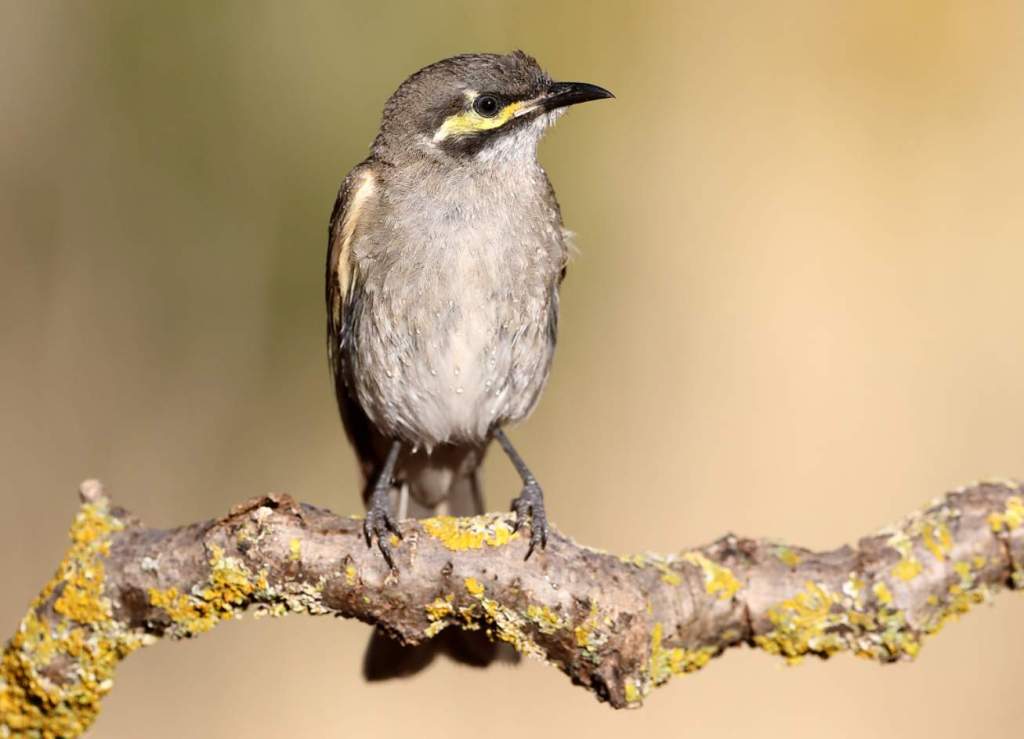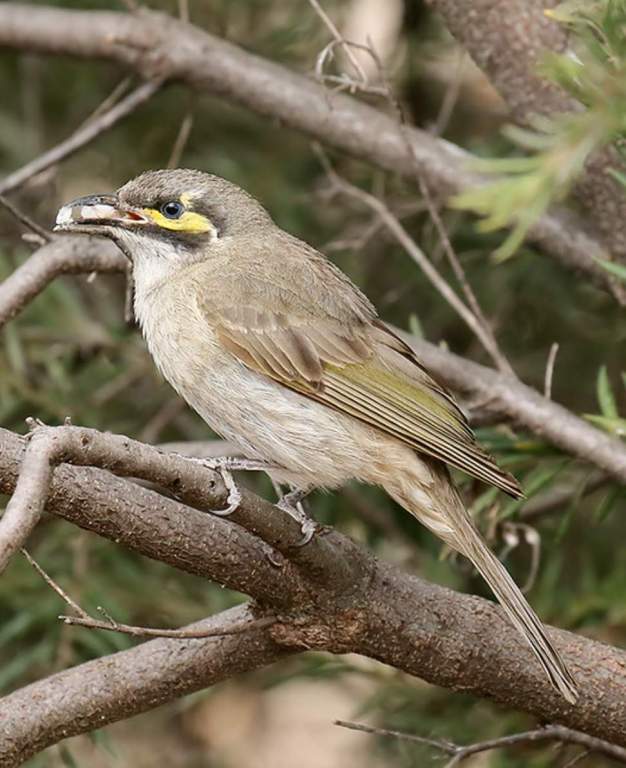Habitat: The yellow-faced honeyeater (Caligavis chrysops) is among Australia’s most conspicuous migrants. Each autumn, thousands leave their breeding grounds in southeastern Australia to travel north along the Great Dividing Range. From March to May, flocks of up to 100 or more fly low along established flyways, one after another, often with white-naped honeyeaters.
Most movement occurs in the morning and often in zigzag directions as the birds shift out of the high country. In the end, the large flocks of restless birds congregate to wander about coastal New South Wales, mid-eastern Queensland, and parts of South Australia over winter. In a range of habitats, from coastal scrubs to open woodland, they follow blossoming flushes for manna before heading back south in spring to breed.
The return movement is less conspicuous, but small flocks drift south between August and October, eventually finding their nesting grounds of the previous summer in wet and dry sclerophyll forests. The flocks break up as nesting pairs establish their own territories in spring. These they defend by singing from their perches on the tops of shrubbery and tree branches throughout the day. Yellow-faced honeyeaters nest late, most in December and some in February in the south.

Diet: Active birds and yellow-faced honeyeaters are arboreal foragers, gleaning insects from twigs and foliage and even hawking for them in short sallies among trees and shrubs. They also rifle for nectar from eucalypts, banksias, grevilleas, and heaths.
Flight: Their flight is strong, swift, and undulating.
Other Names: It is also known as Chickup, Quitchup, and Yellow-Gaped Honeyeater.
Size: The yellow-faced honeyeater measures 160–170 mm long.
Identification: Both sexes look alike. The upper parts, wings, and tail are plain gray-colored; the underwings are cinnamon. Yellow stripe under the eye ending in a white tuft, bordered above and below by black lines; a small white spot over the eye. Underparts are off-white with a pale gray-brown striped pattern. The eyes are blue-grey. The bill is black. The feet are gray-brown. The immature bird is duller.
Vocalizations: The yellow-faced honeyeater’s call is repeated in single-clipped clips during flight and peevish descending whistles during perch or feeding. The song consists of a brisk, descending, ringing chickup-chickup-chickup.
Nesting: The majority of nesting breeds occur between October and January, but nesting occurs between July and March. There is a small cup of fine grass and bark bound with cobwebs, sometimes camouflaged with moss or lichen. This cup is attached to the small fork of the outer branches of a tree or shrub, up to 7 m above ground.
Eggs and Incubation: The yellow-faced honeyeater lays two or three eggs, rarely four; light pink, blotched with browns and reds, more at the larger end; oval, about 21 x 14 mm. Incubation takes about 14 days. Young will fly in 13 days.
Distribution: The yellow-faced honeyeater is found near eastern Australia’s coast and ranges from Atherton Tableland, Queensland, to Mount Lofty and the southern Flinders Ranges, SA. During breeding season, primarily in dense, wet sclerophyll forests, it is also common along creeks
Race: There are no races.
Read More: White-lined honeyeater (Territornis albilineata)







